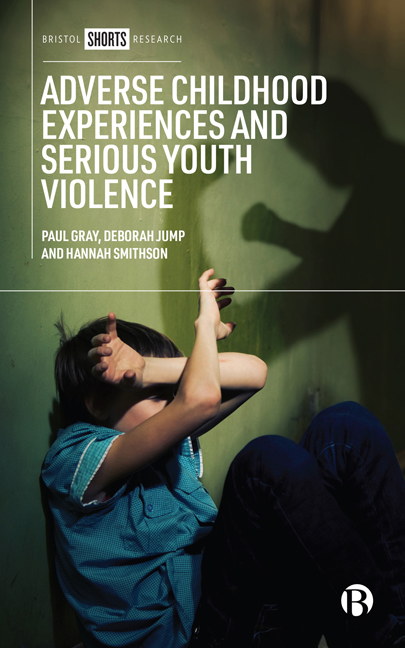Book contents
- Frontmatter
- Contents
- List of Figures and Tables
- Acknowledgements
- One Introduction
- Two Review of the Literature
- Three Researching Adverse Childhood Experiences and Trauma
- Four Serious Youth Violence
- Five Adverse Childhood Experiences
- Six The Relationship between Adverse Childhood Experiences and Serious Youth Violence
- Seven Trauma-informed Practice
- Eight Conclusions
- Notes
- References
- Index
Two - Review of the Literature
Published online by Cambridge University Press: 18 January 2024
- Frontmatter
- Contents
- List of Figures and Tables
- Acknowledgements
- One Introduction
- Two Review of the Literature
- Three Researching Adverse Childhood Experiences and Trauma
- Four Serious Youth Violence
- Five Adverse Childhood Experiences
- Six The Relationship between Adverse Childhood Experiences and Serious Youth Violence
- Seven Trauma-informed Practice
- Eight Conclusions
- Notes
- References
- Index
Summary
Serious youth violence
Youth violence and its impact on young people and communities remains a global challenge. The 2002 World Report on Violence and Health defines violence as the ‘intentional use of physical force or power, threatened or actual, against another person or against a group or community, that either results in or has a high likelihood of resulting in injury, death, psychological harm, maldevelopment or deprivation’ (Dahlberg and Krug 2002: 5). In the same report, youth violence is defined as ‘violence that occurs among individuals aged 10– 29 years who are unrelated and who may or may not know each other, and generally takes place outside of the home’ (Mercy et al 2002: 25). Over two fifths of global homicides in 2020 affected those aged 10– 29 years, with violence being the fourth leading cause of death in that age group (Salzburg Global Seminar 2022). However, deaths resulting from youth violence vary substantially at a global level. For example, across some countries of Latin America, the Caribbean and sub-Saharan Africa, estimates suggest that youth homicide rates are more than a hundred times higher than rates for countries in western Europe and the western Pacific (World Health Organization 2015: 6).
When it comes to the causes of serious youth violence (SYV), a meta-analysis by Hawkins et al (2000) identified a diverse range of factors that have been shown to increase the likelihood of a young person becoming involved in violence, either as a perpetrator or a victim. These factors were grouped into five domains: individual, family, school, peer-related, and community and neighbourhood factors. The individual factors included hyperactivity, concentration problems, restlessness and risk taking; aggressiveness; early initiation of violent behaviour; involvement in other forms of antisocial behaviour; and beliefs and attitudes favourable to deviant or antisocial behaviour. Family factors included separation from a parent, parental criminality, poor family management practices and low levels of parental involvement (Hawkins et al 2000). Indeed, hostile, harsh or rejecting parenting styles have been shown to increase the likelihood that a young person will become involved in SYV (Sitnick et al 2017). Being exposed to domestic violence, either as a victim or a witness, has also been found to increase the likelihood of a young person becoming involved in SYV (Weaver et al 2008).
- Type
- Chapter
- Information
- Publisher: Bristol University PressPrint publication year: 2023

